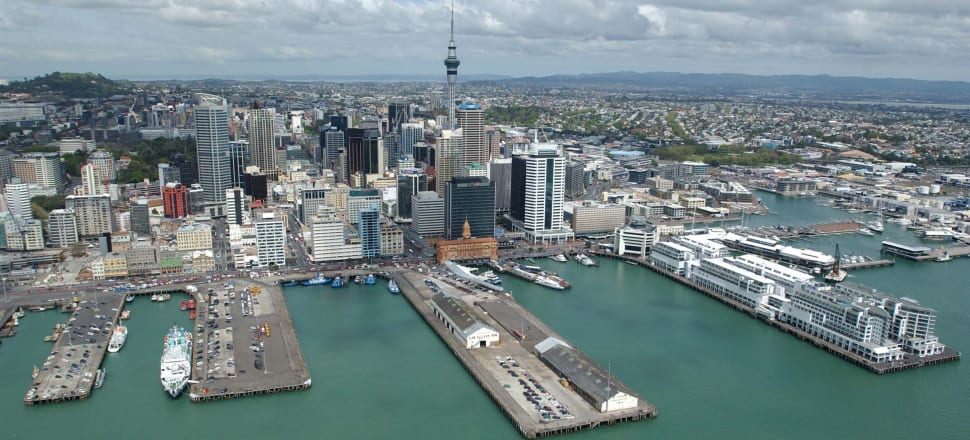
The costs of Auckland's clean-up will be paid for by generations as insurance costs rise, while land that escaped this time may have been destabilised to terror-filled tipping points for storms to come
Opinion: Auckland’s summer that wasn’t turned deadly at the end of January. A record-breaking downpour flooded the city, closed motorways, inundated the airport, and forced Elton John to abandon his show at Mount Smart Stadium. A week later Cyclone Gabrielle blew through, intensifying the damage before to wreak havoc in other parts of the North Island.
How will this summer be remembered – a bad season, a turning point, or maybe even an end to the Auckland dream? There is an obvious desire to ‘return to normal’, but maybe this is the moment to think about where the city is headed.
Growth is in Auckland’s DNA. The society established by Europeans from 1840 was organised around supplying a distant market. Most settlers lived in cities and were involved in commerce, exporting and importing, freighting, and shipping. They brought a strong belief that nature was to be utilised and improved. They cut down trees, drained swamps, reclaimed estuaries, straightened rivers and removed headlands. Settlers brought with them the values and practices of 19th century capitalism - individualism and speculative gain.
In Auckland, the colonisers dispossessed land from Māori, drew on British finance, and assembled buildings from the lands they had cleared. They sought spaces for leisure and housing amenities unavailable to them in the British cities they had fled.
The depression years of the 1930s changed the shape and feel of Auckland. New Zealand was one of the first societies to embrace the welfare state. From the 1930s to the 1970s governments saw it as their task to manage the vicissitudes of free-market capitalism. This meant breaking the dependency on imported goods from Britain. Auckland played its part. Workers flocked to the new factories from the Pacific and from Britain. They were joined by rural Māori in the ‘second great migration’. New Zealand’s population gravitated north.
READ MORE: * Homeless flood victims plead for Govt help * Lianne Dalziel: Don't red-zone cyclone regions * The lay of our unstable land
Workers’ cottages and professional villas on inner-city ridge lines gave way to suburban, quarter-acre state houses. Private developers carved out new suburbs on the city’s edge. Motorways facilitated Auckland’s sprawl. By 1967, academics concluded that Auckland was in ferment. It was a city that had entered a distinctively state-led modern age but now faced the problems found in all large industrial cities the world over. A decade later, other experts concluded Auckland was at full stretch in a faltering national economy. It faced a crisis of urbanism.
That crisis was ‘fixed’ by opening New Zealand society to the free market. Mirror glass buildings sprung up on Queen Street and the valley sides overlooking it. Migrants poured into the city once again, this time from all over. Individuals and private developers borrowed from international banks to build more real estate. Property speculation drove a new growth cycle, while Metro magazine celebrated a new cosmopolitanism, which went hand in hand with a profound shift in power and wealth to those hidden behind the mirror glass. Infilled inner-city housing, and the building of new suburbs cluttered Auckland’s roads with cars.
As climate changes ever faster and warming seas seem to be diverting the course of tropical storms and sustaining their intensity into higher latitudes, neither the weather nor Auckland’s soils now align neatly with cycles of growth
As the welfare state waned, housing became the way to provide for old age and ill-health. The fortunate could borrow money, buy a house (or two or more), pay a mortgage, and sit back and watch (or step forward and trade-up) as the capital gains racked up from booming housing markets. There seemed no limits to the growth of the Big Little City.
Auckland’s growth assumed nature and the city are separable. The suburban rush required more land. Housing outcompeted other land uses and planning restrictions caved. New suburbs destroyed more trees, exposed slopes, reshaped landscapes, and covered the city with concrete. More suburbs meant more cars and more cars meant more motorways, which allowed opportunities for more suburbs and so on. Food and nature itself now had to be sourced from further afield. Speculative gains were reinvested in holiday ‘baches’ or consumed through overseas travel. Fossil fuels made all this possible.
But nature answers back. Auckland’s climate ensures rainfall is plentiful, but the city lies in the path of remnant tropical storms. Shoreline cliffs, hill slopes, and ridges are composed of erosive soils. The trees and bush that have held them firm have been cleared. Now concreted over and converted to suburbs, the ravines and valleys that drain the slopes and the gentle slopes and valley flats in between have become flood hazards.
Nature has been subjugated for growth, but not permanently pacified. As climate changes ever faster and warming seas seem to be diverting the course of tropical storms and sustaining their intensity into higher latitudes, neither the weather nor Auckland’s soils now align neatly with cycles of growth.
This summer may be a sign of things to come. The costs of the clean-up will be paid for by generations as insurance costs rise, while land that escaped this time may have been destabilised to terror-filled tipping points for storms to come.
The task now is to re-imagine Auckland in ways that take seriously the links between the city, nature, and growth.







